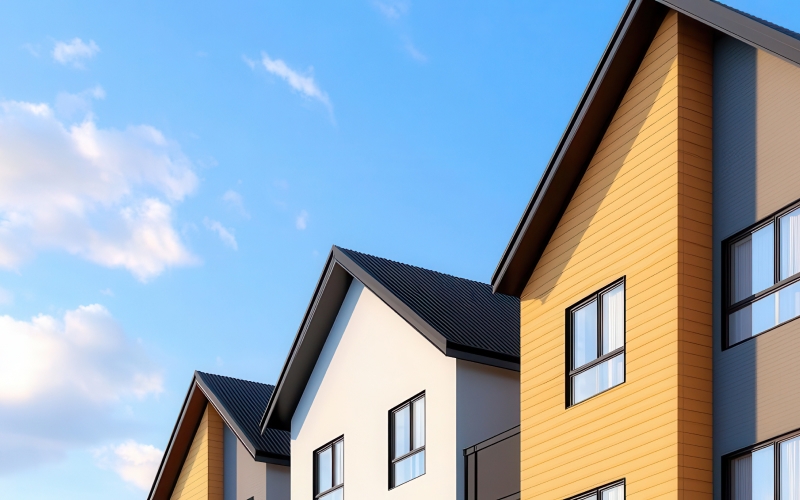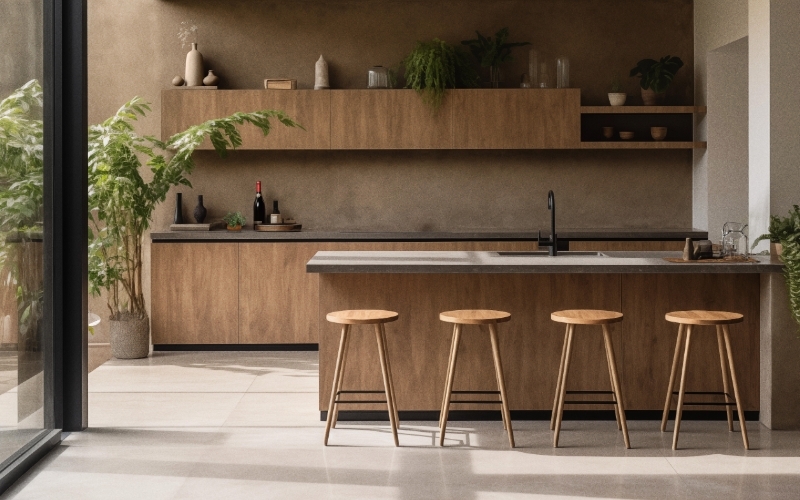Industry Trends
Marketing Insights

Attending the New Home Trends Summit is always a thought-provoking and eye-opening experience — and the 2024 edition did not disappoint.
Hosted by the New Home Trends Institute, which specializes in tracking housing-related consumer and design trends to identify emerging opportunities in the market, the annual summit provides attendees with informed perspectives on the rapidly evolving housing landscape.
Here are four of the most exciting insights that shaped the conversation at this year’s summit.
1. Efficiency is replacing excess.
With high interest rates, shrinking budgets and limited land, the traditional American homeownership dream is being reshaped in real time. The era of sprawling suburban homes is fading as smaller, more efficient living spaces become the norm.
The shift is clear: It’s not just about affordability but attainability.
This critical distinction, which experts discussed in depth at the summit, recognizes the challenges of entry-level housing while highlighting innovative solutions for broader market appeal.
Communities are embracing higher density and smaller homes, not as constraints but as opportunities. We heard repeatedly that space efficiency and flexibility are now top priorities. In a world where families are smaller and pets are becoming more prominent, homes must accommodate a wide array of needs in less square footage.
Forget the McMansion — today’s consumer wants a home that does more with less.
2. Experience is the new design currency.
We live in an era where “more of everything” is no longer always the answer. Instead, experiences, connection and personalization are what consumers crave. This concept was woven throughout the summit discussions, with an emphasis on creating spaces that allow homeowners to shape their unique stories.
Whether it’s evolving from a basketball court to a pickleball court or reimagining a dining room as a multifunctional dine-in kitchen, the takeaway was clear: Homes need to be adaptable, culturally reflective and deeply personal.
Neuroaesthetics, the science of how our brains respond to design and aesthetics, also made waves at the event, hinting that the emotional connection to our homes may become just as important as functionality.
It’s no longer enough for homes to be trendy. They must feel relevant to each individual homeowner. This means incorporating elements such as placemaking and placekeeping, preserving history while offering the freedom to shape the future.
3. Wellness is alive and well.
Wellness continues to be a driving force in the home industry, and it’s growing smarter. The summit’s keynote on blue zones, a deep dive into communities that prioritize health and longevity, was fascinating. Blue zone research has found that longevity can be supported by a lifestyle that emphasizes things such as physical activity, low stress and rich social interactions. By creating built environments that encourage these healthier habits, it gives residents the ability to make healthy life choices easier.
Physical, mental and emotional wellness are becoming cornerstones of home design, and the data supports it: The majority of adults report having some form of mental health challenge. Homes that promote individual wellness, from biophilic design to activity-specific spaces such as yoga rooms and pet sanctuaries, are becoming the gold standard.
Outside of the home, neighborhoods that are designed to facilitate collective wellness are gaining popularity. This trend isn’t limited to younger homebuyers. The 55+ market, especially single boomer women, is looking for communities that are safe, active and fun. “Life is not a spectator sport” was a rallying cry heard throughout the summit.
It’s clear that people want homes that enhance their quality of life, and wellness isn’t a fad — it’s here to stay.
4. Resilience is a rising priority.
Resilience, another recurring theme, is becoming essential in homebuilding. Rising insurance costs and climate challenges have forced developers to rethink how homes can withstand the unpredictable.
The industry is no longer just talking about sustainability; it’s becoming an expectation. However, many homeowners do not want to pay extra for sustainable features, so the onus is on manufacturers to innovate. Building envelopes, materials and designs that mitigate environmental challenges are the future.
One of the more interesting conversations centered on how industry collaboration will be key in pushing forward resilient home design. Whether through multigenerational living spaces, accessory dwelling units or enhanced insulation and materials, developers are working smarter to build homes that can withstand what’s coming.
Embracing the Future of Home Design
The 2024 NHTI Summit was a whirlwind of inspiration, ideas and insightful conversations. Smaller homes, personalized and shared experiences, wellness-centered living and resilient materials are the new reality. These home design trends will require brands in the home and building category to be bold, strategic and, most of all, daring enough to challenge the status quo.
For marketers, this is a call to action. The consumer landscape is shifting, and now is the time to embrace the future with open arms. After all, the summit’s theme of “Navigating the Next” isn’t just about surviving — it’s about thriving.
Want more insights into what’s next for the home and building industry? Read my friend and colleague Kelley Mickler’s recap of the 2024 Home Improvement Research Institute Summit and five home improvement trends to track going forward.


